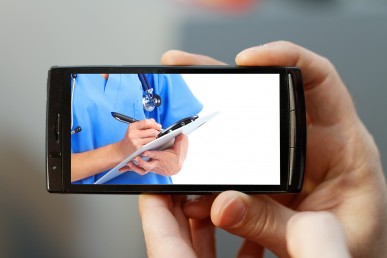Empowering diabetes patients through technology
University of Illinois at Chicago researchers have received a five-year, $4 million federal grant to study how mobile technology can assist African American and Hispanic patients in adhering to their diabetes treatment plans.
Nearly 30 million Americans have diabetes, and 86 million more have prediabetes, costing America $322 billion per year, according to the American Diabetes Association. Many African Americans and Latinos are at high risk for complications from the disease — amputations, end-stage kidney disease and severe retinopathy that can lead to blindness — because they do not properly manage their health.
UIC researchers Lisa Sharp, associate professor of pharmacy systems, outcomes and policy, and Dr. Ben Gerber, professor of medicine, will evaluate whether mobile technology such as text messaging and videoconferencing can help patients improve their medication adherence, eat healthier, and become more physically active. The grant is from the National Institute of Diabetes and Digestive and Kidney Diseases, one of the National Institutes of Health.
Patients from the University of Illinois Hospital & Health Sciences System — 220 in all — will receive extra support from health coaches and clinical pharmacists. Pharmacists will focus on medication compliance, while the health coaches will try to identify psychosocial and environmental challenges to adherence and culturally-informed ways to overcome them.
The aim is to help the patients set goals, problem-solve, and negotiate competing priorities.
“One of the problems in this patient population is their blood glucose decreases, but they can’t keep it there,” Sharp said. “Life happens to them. They may lose loved ones, or experience financial stress. There are all sorts of challenges for people with limited resources living in inner cities.”
Patients may be socially isolated and not have anyone nearby to help them inject insulin. Or their eyesight may be limited, making it difficult to adhere to their medication regimen. The health workers will help patients identify people in their daily lives who can help them manage their disease.
“Family dynamics are often complicated,” Gerber said. “Patients may be uncomfortable in reaching out to family members, or people from their church or neighborhood. We’re trying to find out what the best way is to communicate with them and identify resources in the community that can assist. Family members are thankful that the community health workers are helping their loved ones.”
Health coaches will initially visit the patients in their homes to become acquainted and to learn about their condition and what they are doing to manage it. The number of follow-up home visits will vary, Sharp said — some patients welcome frequent visits, while others may want to see their health coach less often. The health coaches may also accompany patients to doctor visits or the pharmacy.
Text messages will remind patients to take their medications and provide support and encouragement. Health coaches will use tablet computers to videoconference with pharmacists from their patients’ homes.
“Videoconferencing will reduce the need for in-person visits with a pharmacist, as many low-income patients cannot physically make it to their appointments,” said Gerber, who has done earlier studies on medication adherence and technology among Latinos. “Also, our prior work suggests that text messaging is a desirable means of communication and may facilitate more frequent contact with patients.”
“We’re trying to learn who this model works for, and then we can use resources that make the most sense that will help them,” Sharp said. “We’re trying to empower the patient to pay more attention to their health.”
